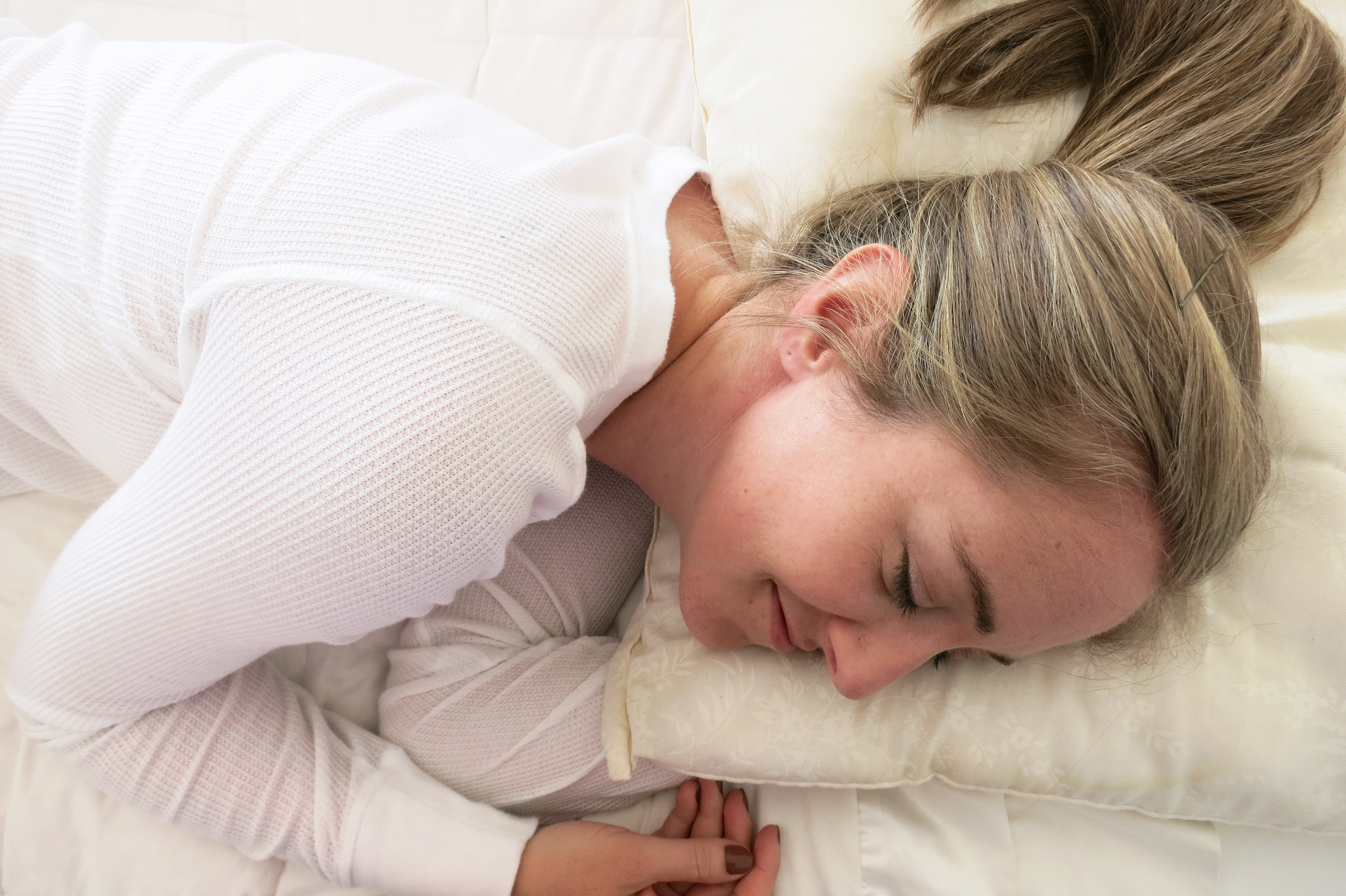I love sleep. My husband can tell you that I take my sleep time very seriously. My well being (and his) depends on how well I sleep.
But I have noticed with my patients that sleep can have a negative impact on our muscles and bones if we sleep in the wrong position.
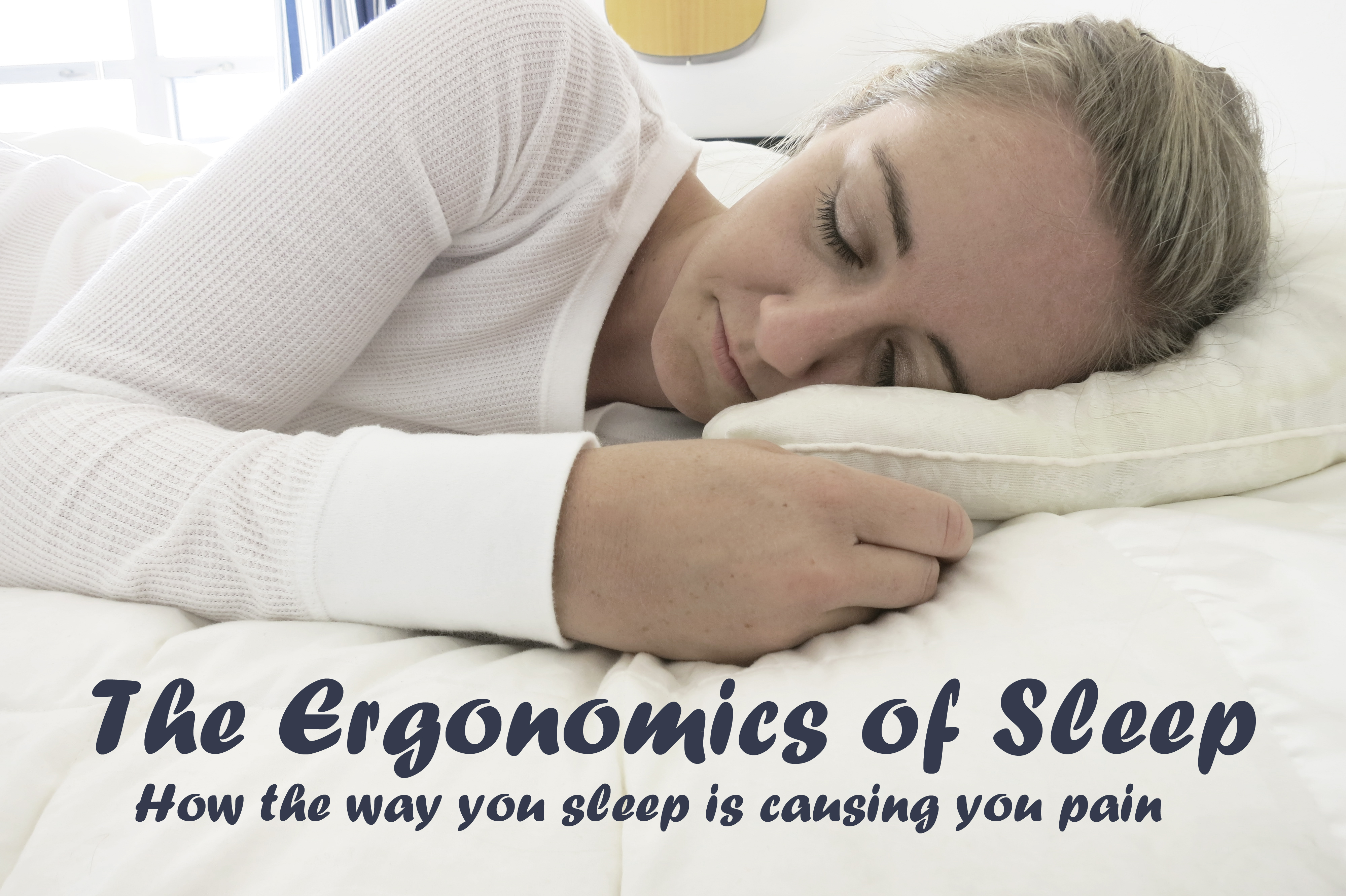
With every evaluation I perform at the clinic, I ask “What is your preferred sleeping position?” because the position we lay in for a long period of time is the position that directs the way our body moves during the day.
Take for example what I like to call the “road kill” position, a favorite among young women:
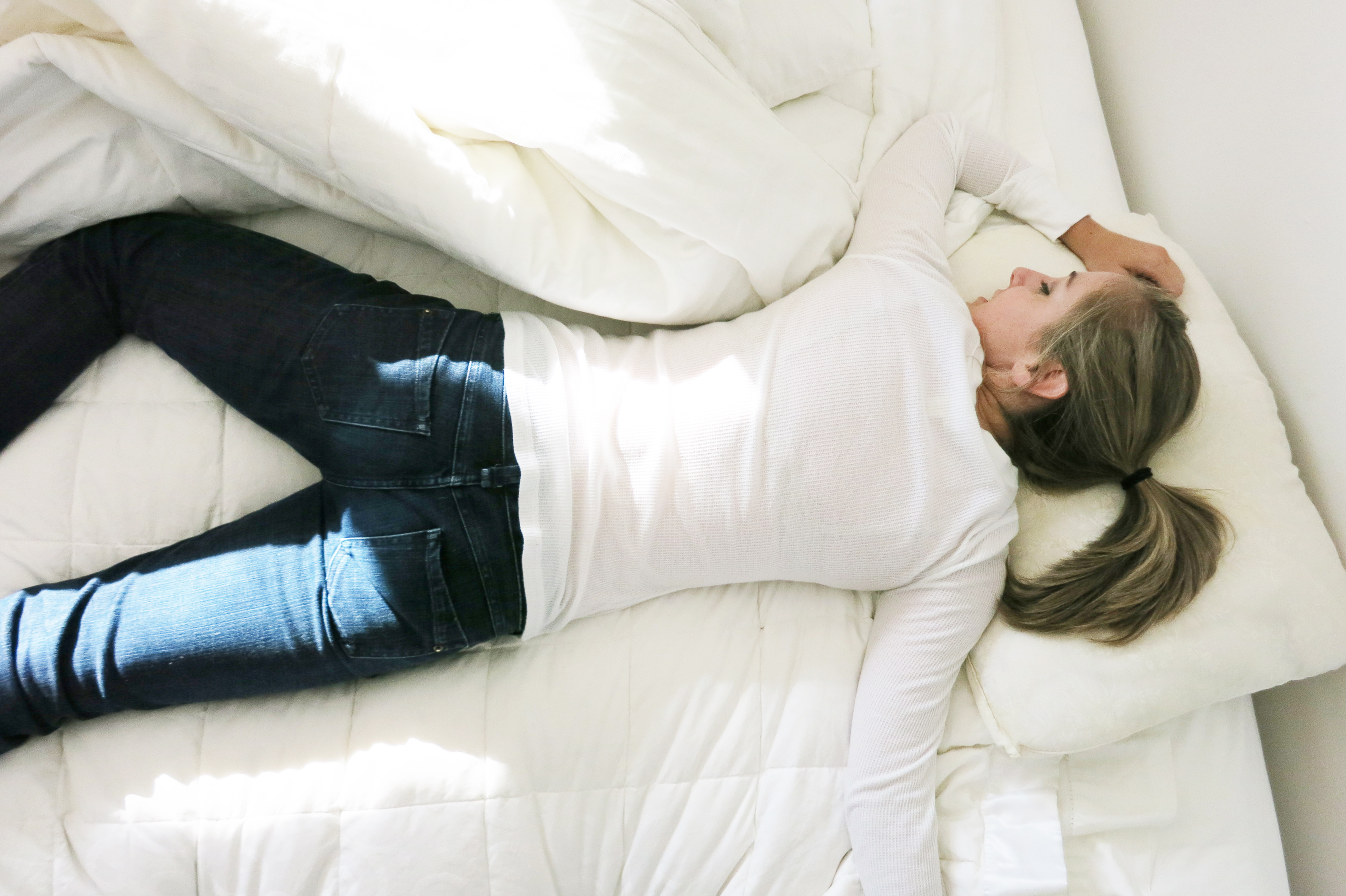
If you like to sleep in this position, you are all over a mess the next day. My neck hurts just looking at this! People who sleep in this position traditionally face the same way each night, which overly stretches their neck. Upon evaluation, I notice that they have too much neck rotation one direction and not enough rotation the other direction. The road kill sleeper may also stick one arm under a pillow, meaning that night after night, they over-stretch their rotator cuff muscles (the shoulder stabilizers), making the shoulder weak, loose, and often painful.
The road kill sleeper also comes into the physical therapy clinic with low back pain and hip pain because the asymmetrical alignment of the hips rotates the pelvis and low back.
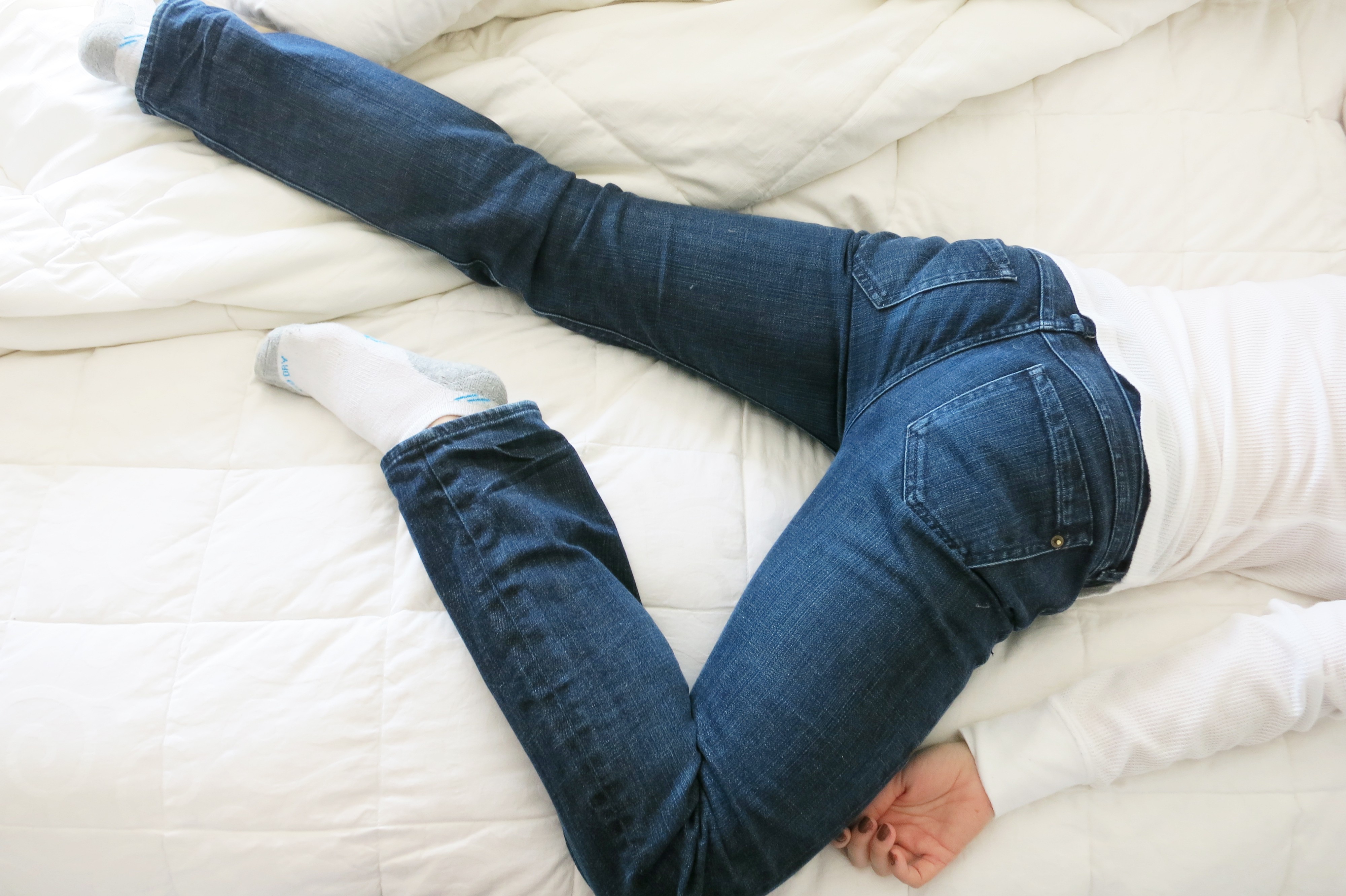
Night after night, this makes the back overly flexible into rotation, meaning that the back will tend to rotate during daily activities (like walking, climbing stairs). The lumbar spine (low back) is not designed for rotation, so rotating the back during daily activities leads to pain. When a young woman tells me she has “sciatic pain” (a generic term for pain that is referred down one leg), chances are that she sleeps with her legs in an asymmetrical position.
There are a number of ways we sleep, and night after night, we allow our bodies to adapt and form into our preferred sleeping position. So what’s the best position to sleep in?
Every person is different, but it’s good to keep symmetry in mind. The legs should be symmetrical, the neck should be in a neutral position, and the low back should be in a neutral position (not too bent, not too extended, not too rotated). Try laying on your side with 1-2 pillows between your knees (all the way down to your shins). If you have shoulder or neck pain, it’s a good idea to hug a pillow with your top arm. Make sure your bottom arm isn’t consumed under your head pillow….you’re just asking for your hand to go numb because you’re impinging on nerves.
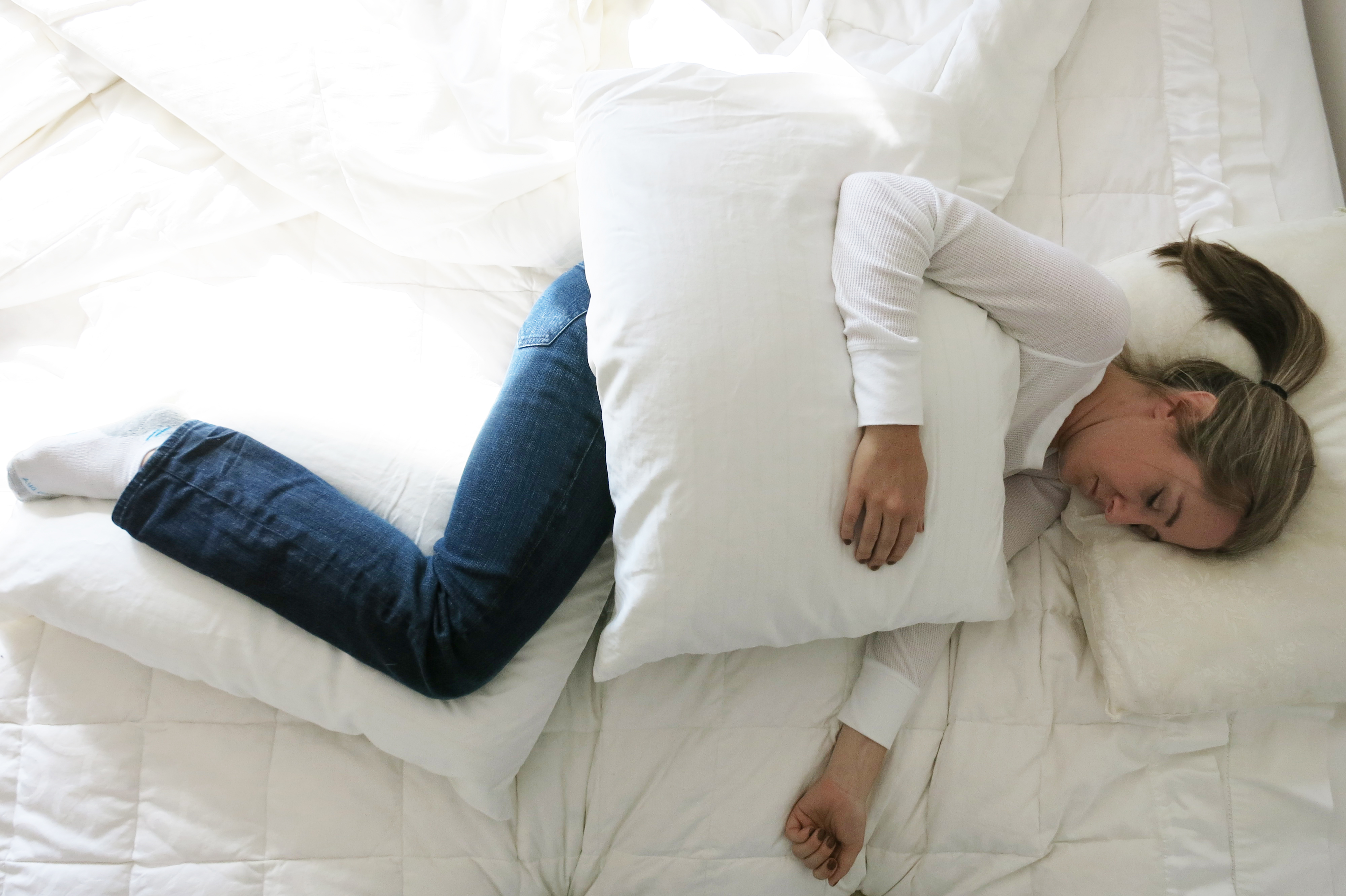
Changing the way you sleep may seem an impossible task. You’ll likely wake up in the road kill position with the extra pillows on the floor — but keep trying. If we start protecting our bodies now, they will last us a lot longer!
***The content of www.kayleemay.com is for informational purposes only. The information presented is not to be taken as professional medical advice, diagnosis, or treatment. If you are having pain, or seeking medical advice, talk to your health care provider. Do not delay in seeking treatment because of information you have read on www.kayleemay.com. Taking recommendations presented on www.kayleemay.com is solely at your own risk***

